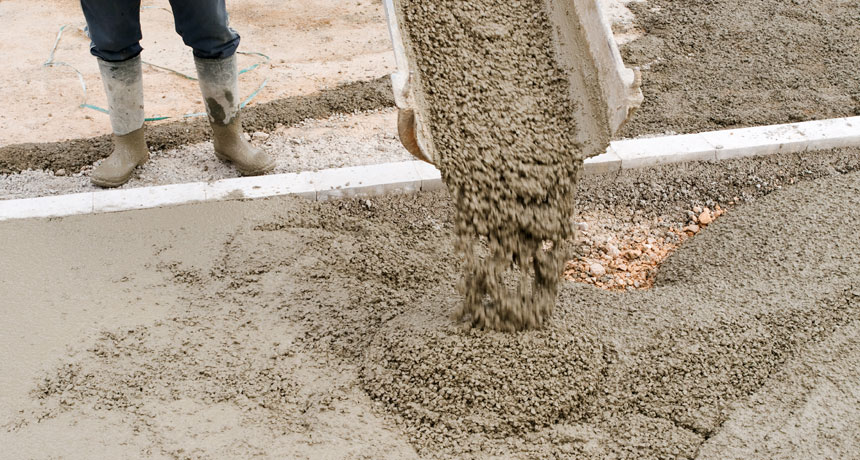Questions for ‘Concrete science’

This slurry of cement, gravel, sand and other minerals will harden into concrete — the most common artificial material on the planet.
Carlos Poveda/ iStockphoto
Share this:
- Share via email (Opens in new window) Email
- Click to share on Facebook (Opens in new window) Facebook
- Click to share on X (Opens in new window) X
- Click to share on Pinterest (Opens in new window) Pinterest
- Click to share on Reddit (Opens in new window) Reddit
- Share to Google Classroom (Opens in new window) Google Classroom
- Click to print (Opens in new window) Print
To accompany feature “Concrete science”
SCIENCE
Before Reading:
1. Name five things that you know of that are made out of concrete.
2. Concrete is the most common artificial material on Earth. Which of its features have made it so attractive?
During Reading:
1. Enough concrete is produced each year to give each person alive a cube how big?
2. What is concrete made from?
3. What do building contractors add to concrete to create a slurry?
4. Adding clay to concrete made it how much stronger (in terms of crushing pressure)?
5. How many U.S. traffic accidents occur each year from hitting animals on the road?
6. What allows a phosphorescent material to glow?
7. What is acid-mine drainage?
8. What happens when acid is used to dissolve cement? What does it release — and why is that useful?
9. Did the teen who studied concrete to treat acid mine drainage actually work with that waste? If not, what did he use in its place, and why?
After Reading:
1. Cement is a critical ingredient in concrete. But each ton of cement that is used causes a release to the atmosphere of one ton of carbon dioxide, a greenhouse gas. Indeed, an estimated 7 percent of the global warming associated with carbon dioxide is due to the concrete industry. As a greener recipe for concrete, many researchers are arguing that fly ash should be substituted for at least some of the cement. So what is fly ash and where does it come from? And why is it potentially better for protecting Earth’s climate?
2. Some researchers are looking to recycle other materials into concrete, such as old glass bottles. They could substitute glass for some of the rock now being used. Find out how much glass is recycled in your community or nation. What share of it is recycled? How much might be available for use in local concrete?
MATH
1. A fully loaded concrete truck typically weighs about 66,000 pounds. It carries 10 cubic yards of concrete per load. If the concrete weights about 4,000 pounds cubic yard, how much does the truck itself weigh (minus the concrete)?
2. A relatively strong concrete would be made from a basic recipe that calls for 50 pounds of cement, 95 pounds of sand and 75 pounds of stone. If you were to replace 13 percent of the cement with fly ash (a “greener” ingredient, which contributes less to global warming), how would that change the overall weight of the cement + sand + stone portion of the recipe? What if fly ash substituted for 30 percent of the cement? Show your work.